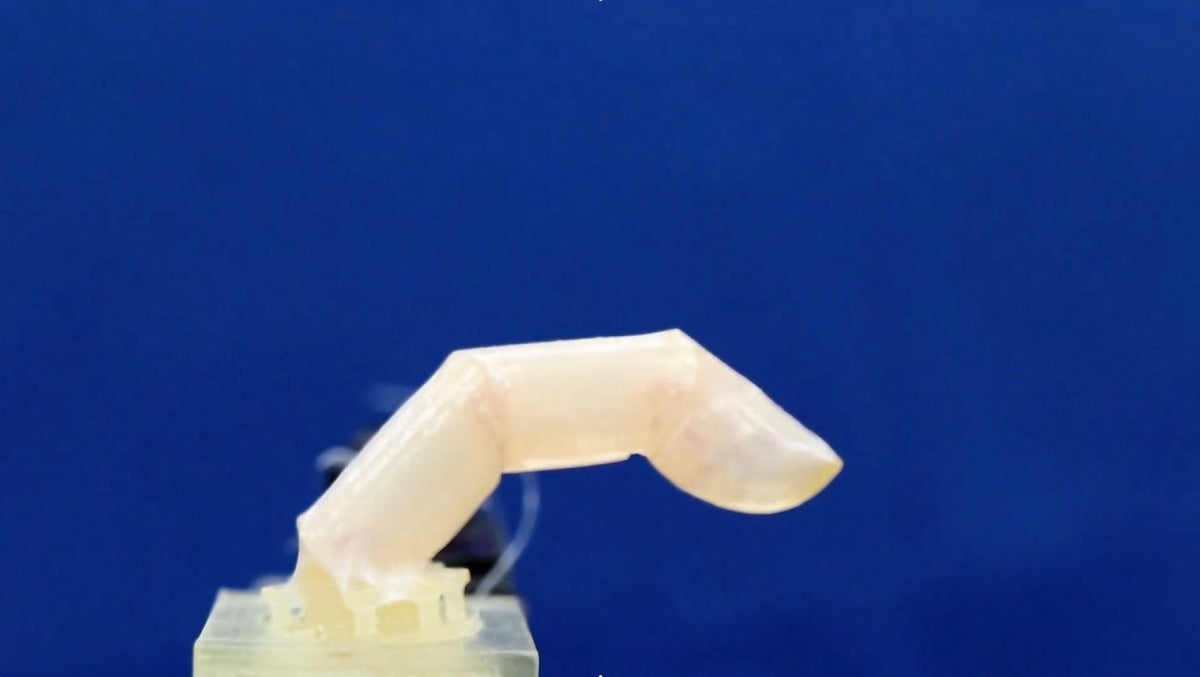
It may be some time before robots walk among humans, but scientists are one step closer by crafting living human skin on robots.
The development has not only given a robotic finger a skin-like texture, but also water-repellent and self-healing functions.
Looking as much like a real human as possible is one of the main goals for humanoid robots that interact with people, often in healthcare and service industries.
This human-like appearance can improve communication and make the machines more likeable, researchers say.
First author Shoji Takeuchi, a professor at the University of Tokyo, Japan, said: “The finger looks slightly ‘sweaty’ straight out of the culture medium.
“Since the finger is driven by an electric motor, it is also interesting to hear the clicking sounds of the motor in harmony with a finger that looks just like a real one.”
We are surprised by how well the skin tissue conforms to the robot's surface
Although current silicone skin made for robots can imitate a human appearance, it does not have the finer details like wrinkles, and cannot perform like human skin.
One of the difficulties with creating living skin sheets to cover robots is fitting them to moving objects with uneven surfaces.
Prof Takeuchi said: “With that method, you have to have the hands of a skilled artisan who can cut and tailor the skin sheets.
“To efficiently cover surfaces with skin cells, we established a tissue moulding method to directly mould skin tissue around the robot, which resulted in a seamless skin coverage on a robotic finger.”
To craft the skin, the team submerged the robotic finger in a cylinder filled with a solution of collagen and human dermal fibroblasts – the two main components that make up skin’s connective tissues.
According to Prof Takeuchi, the success lies within the natural shrinking tendency of this collagen and fibroblast mixture, which shrank and tightly conformed to the finger.
This layer also provided a uniform foundation for the next coat of human cells to stick to.
These cells make up 90% of the outermost layer of skin, giving the robot a skin-like texture and moisture-retaining barrier properties.
The crafted skin is stretchy enough to move as the robotic finger curls and stretches, can be lifted with tweezers, repels water and can even self-heal with the help of a collagen bandage.
However, is is much weaker than natural skin and cannot survive long without constant nutrient supply and waste removal.
Prof Takeuchi said: “We are surprised by how well the skin tissue conforms to the robot’s surface.
“I think living skin is the ultimate solution to give robots the look and touch of living creatures since it is exactly the same material that covers animal bodies.”
The study is published in the journal Matter.






